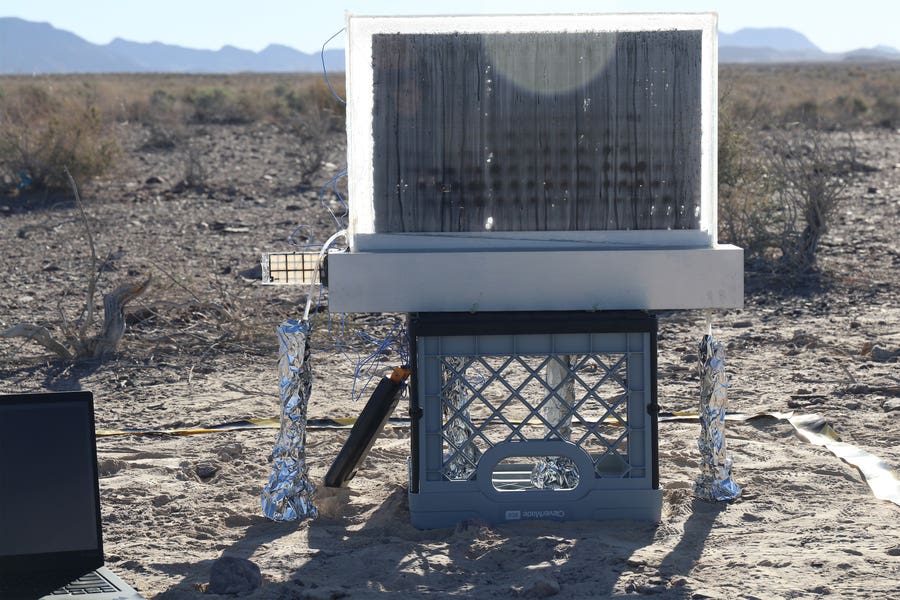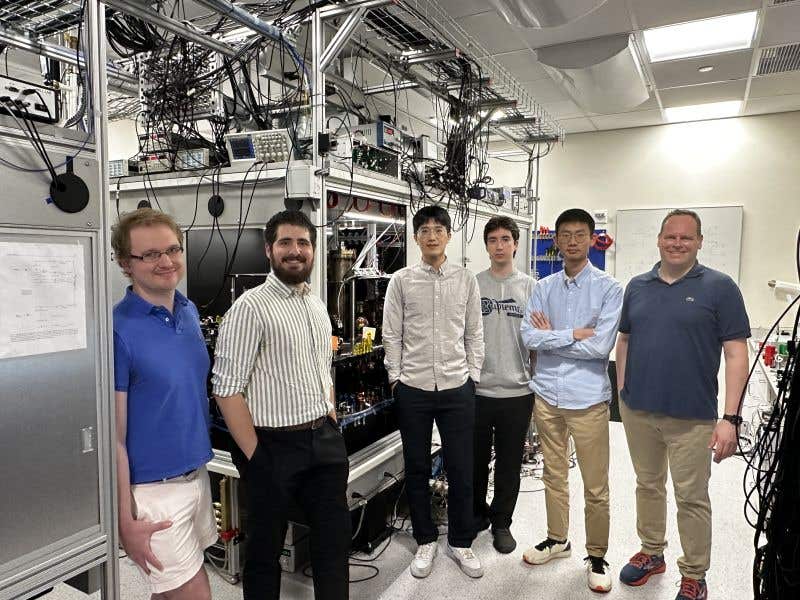MIT’s high-tech hydrogel window pulls clean drinking water from dry desert air
A new window-shaped device built from hydrogel captures drinkable water from air—even in Death Valley – changing access to water forever.

MIT engineers have developed a new passive device that pulls water from the air—even in some of the driest places on Earth, including California’s Death Valley, shown here. (CREDIT: MIT Researchers)
A new kind of window may soon help solve one of the world’s biggest problems—how to get clean drinking water to people who don’t have it. Right now, over 2.2 billion people around the world live without safe, managed drinking water.
In many parts of Africa and Asia, this water crisis is growing worse due to poor infrastructure, especially in landlocked and remote regions. Even in the U.S., more than 46 million people face water insecurity, either lacking running water entirely or relying on water that's unsafe to drink.
Tapping Water From Thin Air
In response to this growing challenge, engineers are exploring ways to collect water from an unexpected source—the air. That may sound strange, but the Earth’s atmosphere holds trillions of gallons of water in the form of vapor. Extracting that vapor and turning it into liquid water is a growing area of research known as atmospheric water harvesting.
At MIT, researchers have developed a passive, solar-powered water harvester that’s built to do exactly that. The new device pulls moisture out of the air using a special kind of gel. It doesn’t need any batteries, solar panels, or even electricity from the grid. And it’s not just a lab concept—it was tested in Death Valley, California, the driest place in North America.
Even in extremely dry air, the device captured between 57 and 161.5 milliliters of drinkable water each day. That’s around one-quarter to two-thirds of a cup. While one panel might not be enough for a full household, a small array of them could supply all the drinking water a family needs—especially in more humid areas where the yield would be higher.
The Window That Works Like a Sponge
The system looks like a black window panel. It’s about the size of a large picture frame and made with a special hydrogel that absorbs water vapor. This gel, which resembles black bubble wrap, expands and contracts as it pulls in moisture and then dries. The hydrogel is shaped into small domes that increase its surface area and make it better at absorbing vapor from the air.
Related Stories
At night, when humidity levels are highest, the hydrogel pulls in water. During the day, sunlight heats the panel. This causes the absorbed water to evaporate from the gel and then condense on the inside surface of a clear glass window. The glass is coated with a cooling film, helping the vapor to condense even more efficiently. From there, the water drips into a small collection system.
One key feature of this system is its ability to work in a wide range of environments. It performed well in relative humidity levels from 21% to 88%, showing promise in both dry deserts and more humid climates. That makes it a flexible solution for many regions facing water shortages.
Safer Than Earlier Designs
Other devices have attempted to harvest water from air using materials called metal-organic frameworks (MOFs) or hydrogels enhanced with salts like lithium chloride. While MOFs are highly porous and can absorb moisture even in very dry air, they don’t expand like hydrogels, limiting how much water they can actually collect.
Hydrogels, on the other hand, are known for their strong swelling ability and fast absorption, which makes them more promising. But earlier hydrogel-based systems had one major problem—the water they produced wasn’t always safe.
Lithium salts added to help the gel absorb moisture could leak into the water, pushing lithium ion levels far above the safe drinking limits set by the U.S. Geological Survey and the Environmental Protection Agency.
The MIT team solved that problem. They added glycerol—a common, non-toxic compound used in foods and cosmetics—into the hydrogel mix. Glycerol stabilizes the salt inside the gel, keeping it from leaking out. The result is water that contains less than 0.06 parts per million of lithium, well within safe drinking limits.
The design also improves on older versions by removing tiny pores that would otherwise let salt escape. The result is cleaner, safer water without the need for extra filtering or purification steps.
Scalable for Real-World Impact
Xuanhe Zhao, the Uncas and Helen Whitaker Professor of Mechanical Engineering and Civil and Environmental Engineering at MIT, says the team aimed to build a meter-scale prototype to test its real-world potential. “It’s a test of feasibility in scaling up this water harvesting technology,” Zhao explains. “Now people can build it even larger, or make it into parallel panels, to supply drinking water to people and achieve real impact.”
Lead author “Will” Chang Liu, a former MIT postdoc now at the National University of Singapore, believes the work is just beginning. “This is just a proof-of-concept design, and there are a lot of things we can optimize,” Liu says. The team is already working on improving the material and structure to boost water output further. They plan to test it in more regions that struggle with water access.
The panel’s design also makes it easy to expand. Since each panel stands upright like a window, they don’t take up much space. Eight panels, each about 1 meter by 2 meters in size, could serve a household in an area without reliable water access. Compared to buying bottled water, the system could pay for itself in less than a month and last for at least a year.
Zhao envisions future installations in low-resource environments, including remote villages where even solar cells are hard to come by. The low-cost, passive nature of the design could make it a breakthrough for communities that can’t afford complex infrastructure.
Toward a Future of Decentralized Water Access
Water stress isn’t just about physical shortages. Many regions face economic water scarcity—where water exists but is too costly or difficult to access. That’s why scalable, local water harvesting systems like this are so important. The atmospheric water harvesting window (AWHW) doesn’t rely on rivers, reservoirs, or pipes. Instead, it pulls water from the sky, wherever there’s vapor.
In Death Valley, the AWHW worked through both hot, dry days and cool, humid nights. Its ability to adapt across humidity levels sets a new benchmark for passive water harvesting systems. It even outperforms some active systems that use power sources to drive performance.
By combining a specially designed hydrogel, a compact shape, and a cooling chamber, this new window-shaped device offers a safe, low-energy way to make clean water nearly anywhere. From deserts in North America to villages in North Africa or northern India, where both physical and economic water scarcity threaten millions, the potential applications are vast.
As Zhao and his colleagues push forward with more tests and improvements, they’re working toward a future where drinking water no longer depends on where you live or how much you earn. Instead, it might just depend on having the right window.
Note: The article above provided above by The Brighter Side of News.
Like these kind of feel good stories? Get The Brighter Side of News' newsletter.



